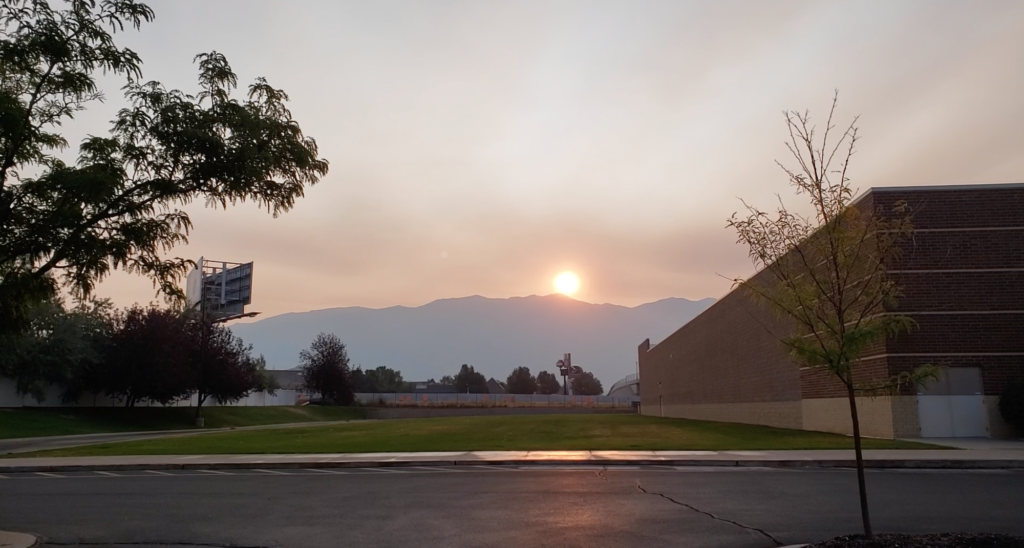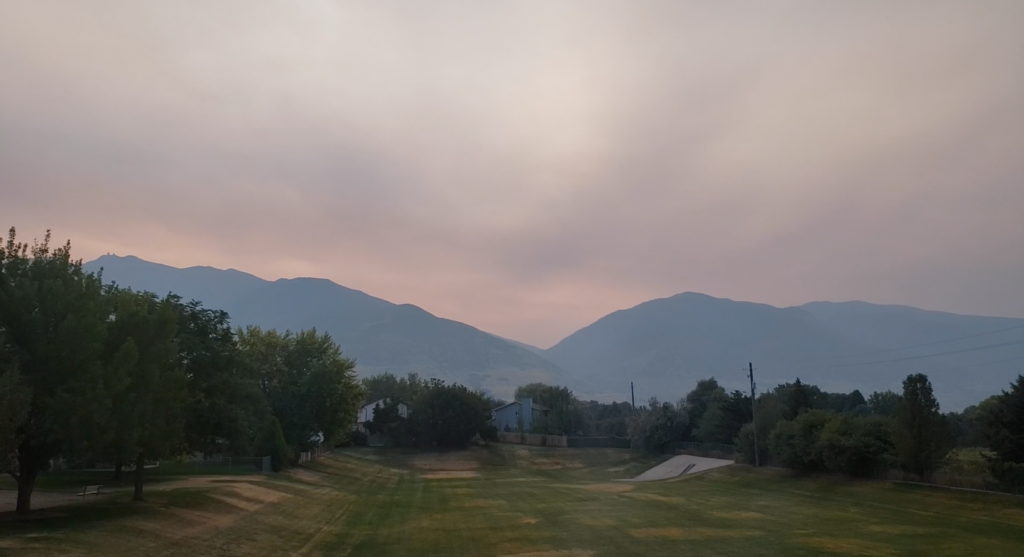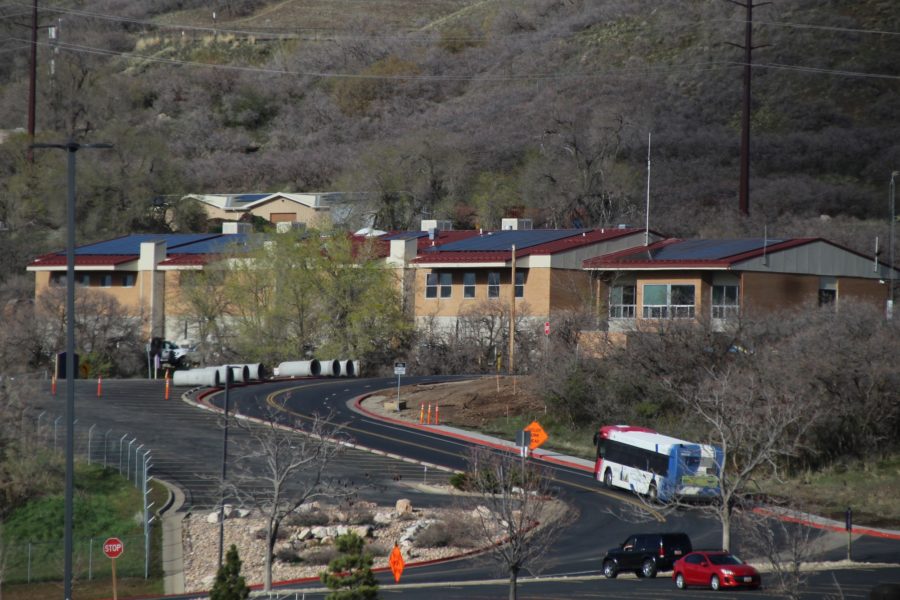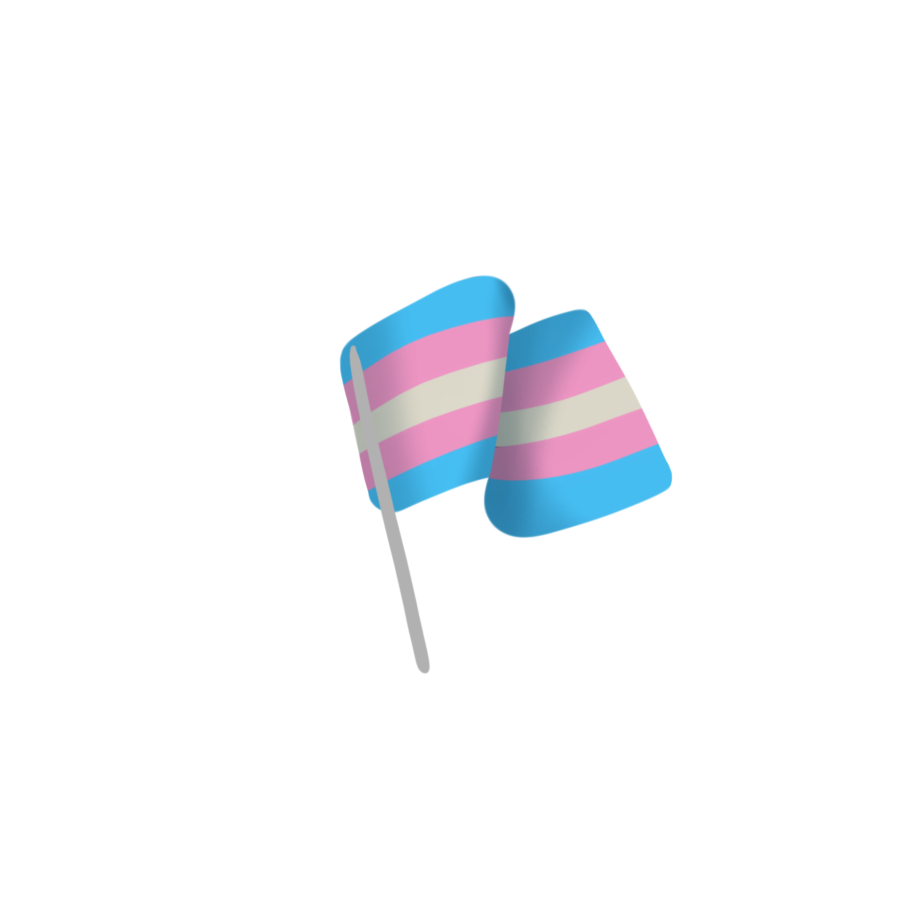Over the last few months, Utah has seen an abundance of smoke from local fires drifting over from West Coast blazes.

In the months of August and September, Utah saw a smoke haze settle across the valley that looked much like the inversion experienced in the wintertime.
The spokesperson for Utah’s Department of Air Quality, Jared Mendenhall, said most of the smoke was just passing through Utah as it traveled with the wind currents. He said it will not have an effect on the visible pollution caused from winter’s inversion.

The cause for the haze in the sky comes from the same particles for both the smoke from this summer and the inversion in the winter. The particles are called PM2.5. According to Mendenhall, these particles are so tiny that the human body is unable to remove them from the lungs.
“It lodges into our lungs and starts to create some of these health issues,” Mendenhall said.
Symptoms of smoke ingestion include coughing and chest tightness. Mendenhall said that when you begin to notice these symptoms, as well as smell the smoke, you should begin to take precautions until the air quality leaves the moderate and severe levels.
These precautions include paying attention to how your body is reacting to the bad air quality, staying indoors and shutting the windows and doors. Those who should be most concerned, especially when the air quality is in the moderate level, are people with preexisting heart and lung conditions.
The forecast for the next week’s air quality is in the green level, meaning Utah’s air quality is good. This information, including current air quality conditions and trends, can be found on air.utah.gov.
“We all do play a part in the air quality here in the valleys,” Mendenhall said.
In the wintertime, the inversion causes all the pollution caused here in Utah to be trapped between cold air sitting at the bottom of the valley and warm air sitting above.
The fires seen this summer are not entirely the fault of Utahns, Mendenhall said, but the quality of air pollution, especially in the winter, can be lessened by simple actions.
“It’s a little different when the smoke is coming from California, but it is important to remember that we produce the pollution that stays around in our valleys,” Mendenhall said.
Mendenhall said 40 percent of Utah’s pollution comes from cars. He said walking or biking instead of driving, running errands in one trip and carpooling can all make a huge difference.




















